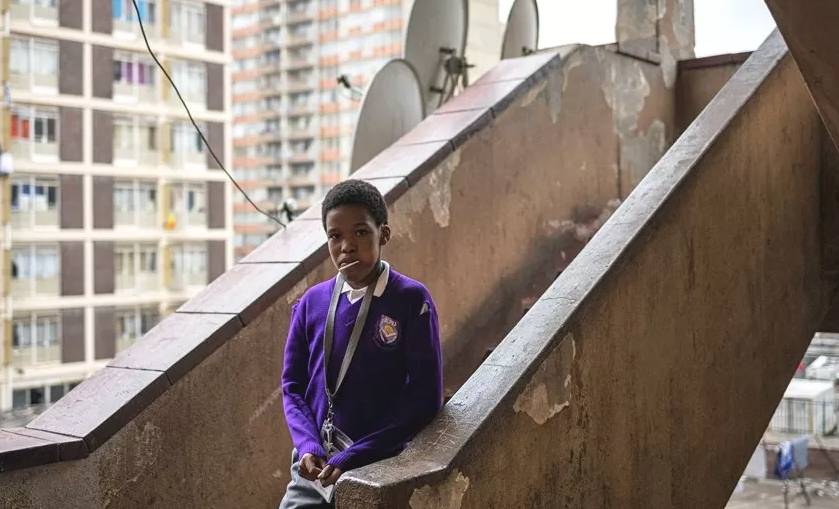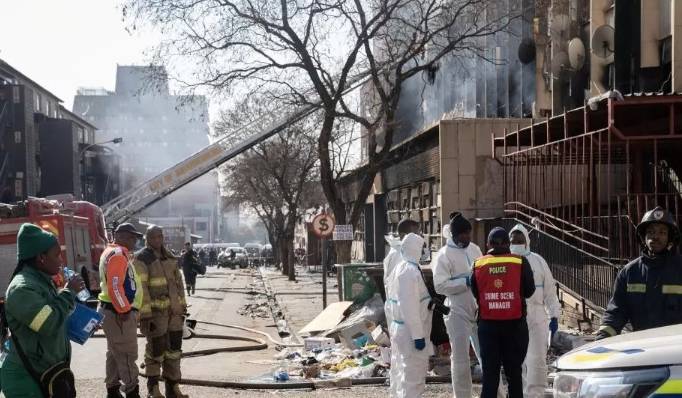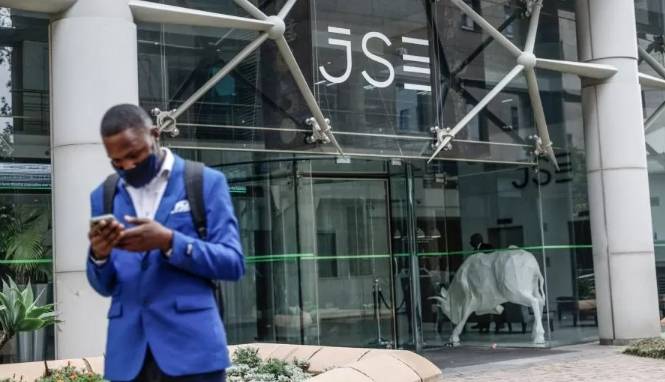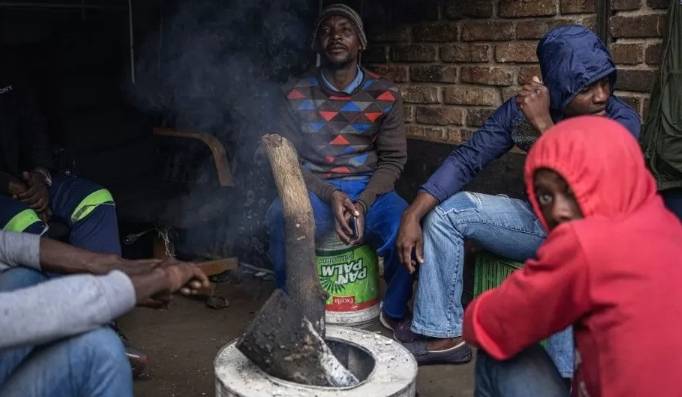
Numerous structures within the heart of Johannesburg, the South African city recently struck by a devastating fire claiming over 70 lives, have been classified as unsuitable for habitation.
However, these aged complexes, forsaken either by their proprietors or municipal administrations, are inhabited by families who frequently pay rent to criminal syndicates overseeing the properties. These structures, devoid of essential amenities like running water, sanitation facilities, and lawful electricity access, are colloquially referred to as having been “taken over” or “hijacked.”
Numerous individuals frequently inhabit a single room, often repurposed from previous office spaces. While fires are not uncommon, they have not reached the magnitude of the recent overnight conflagration. A firefighter present at the location of the five-story building in a district known as Marshalltown mentioned that numerous makeshift constructions resembling shacks had been assembled within, exacerbating the combustible conditions.
Individuals typically prepare meals using paraffin stoves, and in the colder months spanning from June to September, fires are frequently kindled in sizable metal drums, fueled by wood and various scavenged materials. Candles are a commonplace lighting source, while the numerous unauthorized electricity hookups arranged to supply power within the structures also present a significant risk of fires. Additionally, satellite dishes suspended near windows are a common sight.
An individual who managed to flee the recent devastating blaze recounted to the BBC that the fire had ignited during a power outage—a recurring phenomenon across the country. According to her account, the interruption in electricity supply was followed by a series of loud noises resembling gunshots, culminating in a tremendous explosion.

The woman preferred to remain anonymous due to the unauthorized presence of occupants in these structures, who typically avoid interaction with authorities and the media. In a similar vein, photographer Shiraaz Mohamed managed to establish rapport with certain residents of a notorious building in Johannesburg’s Hillbrow district two years ago, subsequently producing a feature on their lifestyles for the BBC.
They shared with him details about the unhygienic environment, describing how the odor of feces filled the hallways as inhabitants resorted to using vacant areas within the building or occasionally the sidewalk for their personal needs.
The residents of those premises, striving to maintain cleanliness within their own designated spaces, comprised a diverse group including impoverished South Africans and migrants originating from various African countries. Among them were individuals without proper documentation, residing in the country without legal authorization.
Being in the city center of Johannesburg entails considerable risk due to elevated crime rates
Despite its designation as the Central Business District (CBD), a term that persists, numerous businesses have already relocated due to the persistently unsafe environment.
This occurred roughly during the period when white-minority rule concluded in 1994. Throughout the era of apartheid, the government enforced stringent racial segregation policies within cities, compelling black and mixed-race populations to relocate to townships situated on the outskirts.
Indeed, the location of the fire, 80 Albert Street, originally served as the headquarters of the Non-European Affairs Department when it was inaugurated in 1954. This was the place where black South Africans would obtain a passbook, referred to as a “dompas,” which regulated their travel permissions. At the entrance, a heritage plaque in blue commemorates the building’s historical importance.

With the dissolution of apartheid, individuals who had been marginalized to the outskirts of cities gained the freedom to relocate inward. Impoverished individuals seeking economical housing options chose to reside near their workplaces to mitigate steep commuting expenses.
As certain businesses and more affluent CBD inhabitants shifted to the prosperous northern suburbs, including the Johannesburg Stock Exchange, aged commercial structures within the city center were repurposed into budget-friendly residential apartments.
Subsequently, the structure that was consumed by the fire was converted into the Usindiso Women’s Shelter before falling into neglect and falling under the control of criminal syndicates. The recently emancipated nation also drew migrants, including both those seeking opportunities and refugees, many of whom established their homes in this economical city center housing.
South Africa confronted and continues to grapple with a severe housing scarcity, stemming from the apartheid era
The nation continues to exhibit profound divisions and inequalities, ranking among the most segregated societies globally. In Johannesburg, the largest city, around 15,000 individuals were projected to be without homes earlier this year, according to information from the provincial department shared with the fact-checking website Africa Check.
After businesses departed, the CBD transformed into a zone to avoid due to its association with crime and violence; reportedly, certain proprietors abandoned buildings as outstanding council rates surpassed their property’s worth. Over a decade ago, the Johannesburg city authorities initiated endeavors to revitalize the area, labeling buildings as unsuitable for human occupancy and, in numerous instances involving legal proceedings, relocating some of the occupants to alternative accommodations.

According to legal regulations, property proprietors are required to provide occupants of a building with alternative housing options before carrying out evictions, regardless of whether they possess official documentation. Certain sections of the CBD have undergone redevelopment, often facilitated by private investments.
As abandoned structures multiplied, including some owned by the council and entangled in legal disputes, criminal syndicates recognized an opportunity to capitalize on the situation, exploiting individuals in need of housing even further.
The rent might be relatively steep, yet such landlords tend to disregard unfavorable credit histories or the absence of official documentation among tenants. Life within a commandeered building is challenging, marked by the prevalence of drugs and addiction, with external individuals facing hazards when entering such spaces.
However, as the occupants share their personal stories, it becomes evident that these deserted buildings provide them with a shelter and an opportunity to envision a more promising future.
